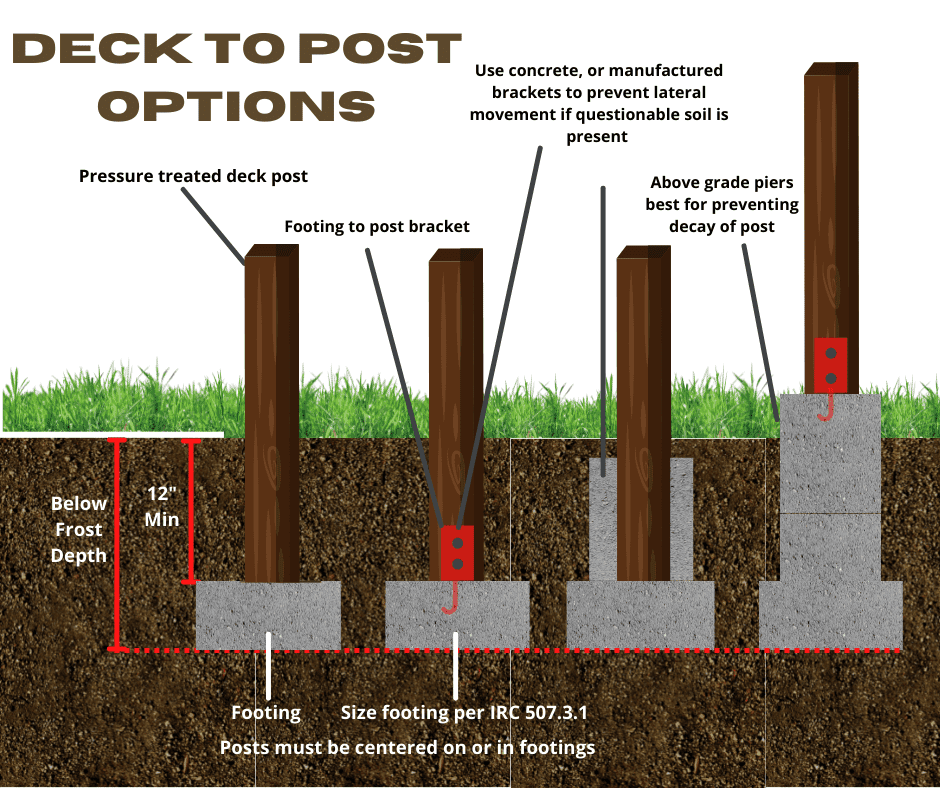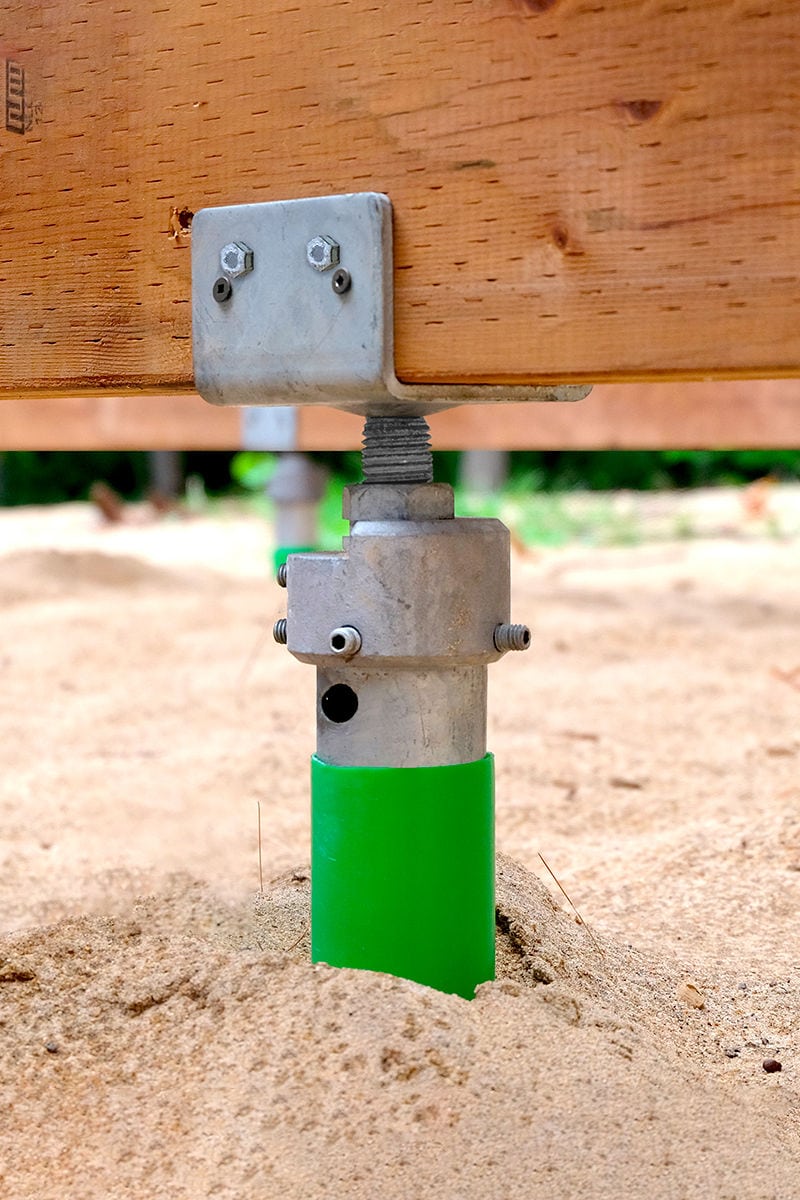Step-by-Step Deck Quality: Making Sure Stability with Effectively Installed Deck Footings
Step-by-Step Deck Quality: Making Sure Stability with Effectively Installed Deck Footings
Blog Article
Choosing the Right Deck Footings for Security and Durability
When it concerns constructing a deck, one of one of the most crucial decisions you will certainly make is choosing the appropriate grounds for stability and sturdiness. The durability and safety of your deck depend greatly on the kind of footings you choose, as they provide the crucial support and stability to withstand the examination of time. With a myriad of options offered, it can be overwhelming to identify which grounds are best fit for your certain demands. In this conversation, we will certainly explore the different sorts of deck grounds, take into consideration the vital variables to consider when making a decision, and explore the advantages and disadvantages of various choices. By the end, you will certainly have a more clear understanding of the choices at hand and be better outfitted to make a notified choice for your deck project.
Kinds of Deck Grounds
There are a number of kinds of deck grounds that can be utilized, each offering unique benefits and considerations. One typical kind of footing is the concrete pier footing. These grounds include a cylindrical hole loaded with concrete, which provides a strong foundation for the deck messages. Concrete pier grounds are fairly very easy to mount and provide superb stability, making them a popular option for numerous deck projects.
An additional type of footing is the helical pile footing. Helical stacks are steel shafts with helical plates affixed to them. These footings are installed by screwing them right into the ground, which creates a safe and secure foundation for the deck. Helical stack grounds are optimal for locations with difficult dirt conditions, as they can be installed in nearly any kind of kind of soil. They likewise enable for very easy adjustment and progressing of the deck if required.
Additionally, some contractors go with precast concrete grounds. These grounds are made of durable concrete and be available in various forms and sizes to fit different deck designs. Precast concrete footings are convenient to install and provide a steady base for the deck structure.
Finally, one more option is the post-in-anchor ground system. This sort of footing entails driving a metal anchor into the ground and affixing it to the deck blog post. It uses flexibility in terms of placing the deck messages and is ideal for decks with light-weight frameworks.
When selecting the best kind of deck footing, it is crucial to think about factors such as dirt conditions, deck tons, and neighborhood structure codes (Deck Footings). Consulting with a specialist specialist or architectural designer can assist make sure the suitable footing is picked for a risk-free and secure deck
Variables to Take Into Consideration When Selecting Grounds
When selecting the ideal grounds for a deck, it is critical to meticulously take into consideration different variables such as soil conditions, deck tons, and adherence to regional building ordinance. These elements play a significant role in making certain the security and durability of the deck framework.
Among the main elements to think about is the dirt conditions. The kind of soil on which the deck will be developed establishes the sort of grounds required. For instance, decks developed on sandy or loosened dirts may require much deeper footings to offer ample support and avoid settling. On the other hand, decks improved clay or extensive soils might need grounds that can accommodate the dirt's tendency to expand and contract.
An additional vital factor is the deck tons. The weight of the deck, consisting of the materials utilized and any kind of possible online lots such as furniture or gatherings, should be taken into account when picking grounds. The footings should be developed to birth the weight of the deck and disperse it evenly to avoid any kind of architectural concerns or failings.
Last but not least, adherence to neighborhood building ordinance is critical. Building ordinance vary from region to region, and it is necessary to comply with the certain requirements established by the regional authorities. Deck Footings. These codes make certain that the deck is developed safely and meets the necessary requirements for architectural honesty and load-bearing capability
Concrete Grounds: Benefits And Drawbacks

Concrete grounds offer several advantages and negative aspects when made use of as the foundation for a deck. On the positive side, concrete grounds provide superb security and sturdiness.
Another benefit of concrete grounds is their flexibility. They can be poured into different sizes and shapes to fit numerous deck styles and setups. Concrete footings can be customized to fit the specific demands and needs of the deck framework.
However, there are have a peek at these guys likewise some drawbacks to making use of concrete footings. One significant negative aspect is the expense and labor included in their installation. Concrete footings require excavation and frequently need the help of heavy equipment. This can boost the total price of the deck project and may require professional support.

Helical Piers Vs. Sonotubes: Which Is Much better?
In thinking about the structure options for a deck, the comparison in between helical piers and sonotubes is important in determining the exceptional selection. Helical piers, also referred to as screw heaps, are steel shafts with helical plates attached to them. They are turned right into the ground making use of hydraulic equipment, supplying a steady and resilient foundation for the deck. On the other hand, sonotubes are round kinds made from cardboard or fiber product that are loaded with concrete. They are positioned in an opening went his response into the ground and offer assistance for the deck.
The helical plates on the piers develop a strong grasp with the soil, changing or stopping any activity of the deck. Sonotubes, on the various other hand, depend only on the concrete filling for stability, which may not provide the very same level of toughness and resistance.
In regards to setup, helical piers are reasonably much easier and faster to set up compared to sonotubes. The hydraulic equipment used to turn the piers right into the ground makes certain a fast and efficient procedure. Sonotubes, on the various other hand, require digging openings and pouring concrete, which can be lengthy and labor-intensive.
In addition, helical piers are an even more flexible alternative. If needed, they can be utilized in numerous dirt conditions and can be readjusted or enhanced. Sonotubes, on the other hand, might call for additional support, such as rebar, in certain soil conditions or areas with high lots needs.
Picking the Right Footings for Your Deck's Dimensions
For optimum structural integrity, it is vital to thoroughly pick the suitable footings that align with the dimensions of your deck. The dimensions of your deck, including its size, size, and elevation, play a you can try here substantial role in determining the type and size of footings needed.
When picking grounds for your deck, it is essential to consider the load-bearing capability of the dirt. The weight of the deck, incorporated with the weight of any furniture or people on it, exerts a considerable force on the grounds (Deck Footings). It is important to select footings that can adequately support this weight without moving or sinking over time.
The shapes and size of the footings need to likewise be considered. Bigger decks with greater measurements need bigger footings to offer enough stability and assistance. The shape of the grounds, whether they are rounded or square, depends upon the style and design of the deck. Furthermore, the depth at which the grounds are mounted ought to be identified based on the frost line in your region to stop any type of heaving or moving due to freezing temperature levels.
Verdict
Finally, choosing the ideal deck footings is vital for ensuring security and toughness. Aspects such as the type of footings, the deck's measurements, and the benefits and drawbacks of different options ought to be taken into consideration. Concrete grounds use stamina and long life, yet may be a lot more time-consuming and costly to set up. Helical piers and sonotubes have their very own advantages and disadvantages. Eventually, choosing the appropriate footings for your deck's particular demands is crucial for a resilient and effective structure.
These footings are composed of a round opening filled with concrete, which offers a solid foundation for the deck articles. Concrete pier footings are fairly simple to mount and offer superb security, making them a prominent choice for numerous deck projects.
Precast concrete footings are practical to install and offer a secure base for the deck structure.
It provides flexibility in terms of positioning the deck posts and is appropriate for decks with lightweight structures.
Concrete grounds offer several benefits and drawbacks when made use of as the foundation for a deck.
Report this page